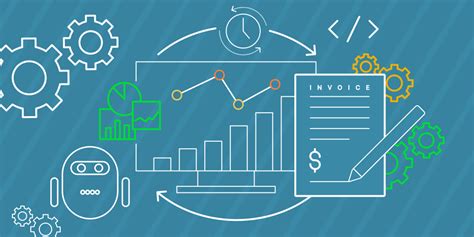Berikut adalah posting blog tentang RPA untuk keuangan dan akuntansi:
RPA for Finance and Accounting: A Complete Recipe for Automation
Robotic Process Automation (RPA) is revolutionizing the finance and accounting industry, streamlining operations and boosting efficiency. This comprehensive guide provides a complete recipe for implementing RPA in your financial processes. We'll explore its benefits, key use cases, and the steps involved in successful deployment.
What is RPA in Finance and Accounting?
RPA uses software robots to automate repetitive, rule-based tasks. In finance and accounting, this translates to automating processes like data entry, invoice processing, reconciliation, and report generation. These "bots" mimic human actions, interacting with applications and systems to perform tasks faster, more accurately, and with greater consistency than human employees.
Key Benefits of RPA in Finance and Accounting:
- Increased Efficiency: Automate tedious tasks, freeing up human employees for more strategic work.
- Reduced Costs: Lower labor costs and reduce errors associated with manual processes.
- Improved Accuracy: Minimize human error, leading to more reliable financial reports and data.
- Faster Processing Times: Accelerate processes like invoice processing and reconciliation, leading to improved cash flow.
- Enhanced Compliance: Ensure adherence to regulations and internal controls by automating compliance-related tasks.
- Better Scalability: Easily scale operations to handle fluctuations in workload without hiring additional staff.
RPA Use Cases in Finance and Accounting: A Delicious Menu of Automation
The possibilities for RPA in finance and accounting are vast. Here are some key use cases:
1. Accounts Payable Automation:
- Invoice Processing: Automate invoice data extraction, validation, and processing, reducing manual data entry and improving payment accuracy.
- Vendor Management: Streamline vendor onboarding and communication, ensuring timely payments and accurate records.
2. Accounts Receivable Automation:
- Invoice Generation and Sending: Automate the creation and distribution of invoices, reducing manual effort and ensuring timely payments.
- Payment Processing: Automate the reconciliation of payments with invoices, improving cash flow management.
3. Financial Reporting and Analysis:
- Data Consolidation and Aggregation: Automatically collect and consolidate data from multiple sources, streamlining reporting and analysis.
- Report Generation: Automate the generation of financial reports, freeing up analysts to focus on interpretation and insights.
4. Reconciliation:
- Bank Reconciliation: Automate the reconciliation of bank statements with internal records, ensuring accuracy and minimizing discrepancies.
- Inter-Company Reconciliation: Automate the reconciliation of transactions between different entities within an organization.
The Recipe for Successful RPA Implementation: Step-by-Step Instructions
Implementing RPA successfully requires careful planning and execution. Here's a step-by-step recipe:
1. Process Assessment and Selection:
Identify processes that are repetitive, rule-based, and high-volume, suitable for automation. Prioritize based on potential ROI.
2. Technology Selection:
Choose the right RPA platform, considering factors like scalability, integration capabilities, and vendor support.
3. Design and Development:
Design the automation process, including data mapping, exception handling, and error management. Develop and test the RPA bots.
4. Deployment and Monitoring:
Deploy the bots to the production environment and monitor their performance, making adjustments as needed.
5. Continuous Improvement:
Continuously monitor and improve the performance of the RPA bots, expanding automation to other processes as opportunities arise.
Seasoning Your RPA Implementation for Success: Key Considerations
- Change Management: Effectively communicate the benefits of RPA to employees and address concerns.
- Data Security: Ensure the security of financial data throughout the automation process.
- Integration: Seamlessly integrate RPA with existing financial systems and applications.
Conclusion: Serve Up Efficiency and Accuracy
RPA offers significant benefits to finance and accounting teams, improving efficiency, accuracy, and compliance. By following this recipe, organizations can successfully implement RPA and reap the rewards of automation. Remember that careful planning, thorough execution, and continuous improvement are crucial for maximizing the return on investment.
